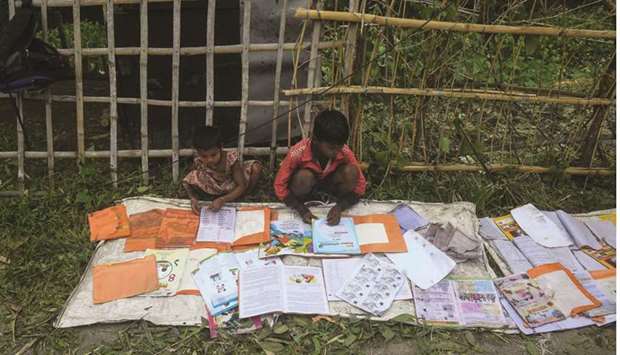West Bengal began a massive clean-up yesterday after the fiercest cyclone since 1999 killed at least 72 people – including 14 in the capital Kolkata – with state Chief Minister Mamata Banerjee saying: “I haven’t seen a disaster of this magnitude.”
Cyclone Amphan left a trail of destruction in its wake, flattening houses, uprooting trees, blowing off roofs and toppling electricity pylons. A storm surge inundated coastal villages and wrecked shrimp farms vital to the local economy.
“The impact of Amphan is worse than coronavirus,” Mamata said. “Thousands of mud huts have been levelled, trees uprooted, roads washed away and crops destroyed.”
Reuters Television footage shot in West Bengal showed upturned boats on the shore, people wading through knee-deep water and buses crashed into each other.
More images showed villagers trying to lift fallen electricity poles, fishermen hauling their boats out of a choppy sea, and uprooted trees lying strewn across the countryside.
Designated a super cyclone, Amphan has weakened since making landfall.
Prime Minister Narendra Modi posted a tweet expressing concern over the people suffering in West Bengal. “Have been seeing visuals from West Bengal on the devastation caused by Cyclone Amphan. In this challenging hour, the entire nation stands in solidarity with West Bengal,” he said.
Concern was growing over flooding in the Sundarbans, an ecologically-fragile region straddling the Indian-Bangladesh border, best known for thick mangrove forests and its tiger reserve.
On the Indian side of the Sundarbans, a village official said embankments surrounding a low-lying island, where some 5,000 people live, had been washed away, and he had been unable to contact authorities for help.
“We have not been able inform them about anything since Wednesday night, the official, Sanjib Sagar, said.
Residents of Kolkata woke to flooded streets, with the city’s signature yellow taxis up to their bonnets in water in one neighbourhood. The Kolkata airport lay under water and several neighbourhoods in the city of 14mn people have had no electricity since the storm struck, according to residents.
After the storm passed people were trying to retrieve articles from the rubble of their shops in the city.
Pradip Kumar Dalui, an official in the state’s South 24 Parganas area, said that storm waters breached river embankments in several places, flooding over half a dozen villages, that were home for more than 100,000 people.
Electricity lines and phone connections were down in many places, but so far no deaths had been reported in this area, he said.
The last super cyclone in 1999 left nearly 10,000 dead in Odisha.

Children lay out their wet textbooks to dry following the landfall of cyclone Amphan in Khejuri area of East Midnapore, West Bengal, yesterday.
